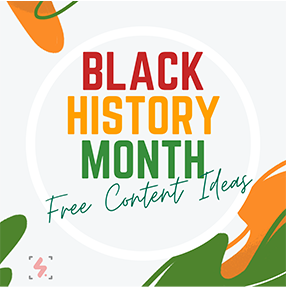Crafting A Story
Asking teenagers to write a filmable script is akin to making a promise to yourself to lose five pounds – both endeavors begin in earnest with the best of intentions, but the end result is disappointing and never lives up to the original promise.
Also, consider that most kids don’t watch short films: they aren’t a part of kids’ daily entertainment diet. Kids consume long-form television, the latest Disney offering, or several second long, easily digestible social media clips ad nauseam.
Ask a student to write a three minute short film, and here’s an example of what you’ll get: a detective framed his partner for a crime several years back; however, the guilt of doing that now weighs heavily on the detective, and he wants to come clean.
Moreover, learning to tell a story through the format of a script is a skill that needs to be honed and sharpened.
The great news is that kids can be encouraged to craft a successful short “story” by focusing on some key aspects of story structure.
This approach is informed from Jill Chamberlain’s magnificently digestible approach to screenwriting called the nutshell technique (you should buy a copy right now – The Nutshell Technique — Jill Chamberlain). It is not a step by step structure for writing feature films, but it does help identify key moments in a feature film that focus on a main character striving to overcome a flaw either successfully (a comedy) or unsuccessfully (a tragedy) through a series of obstacles.
Let’s get started with our much simplified approach to crafting a story.
As we start, let’s remember that we aren’t asking kids to write a script (complete with proper formatting). No, we are asking them to craft a story. Later, after kids have a story, we can teach them how to craft a story in script format (that’s another lesson).
First, make sure that kids know that a story is this: one character attempts to solve a problem. That’s it. Keep it short and simple. The character may succeed; they may fail. Regardless, a story, in these initial stages, consists of one character attempting to solve one problem.
Have kids begin with a character and remind kids that their character has a goal (he/she wants or needs something). Also, it doesn’t hurt to have a consequence for not achieving their goal (this creates some drama) but this isn’t essential to the story.
Quez, a high school senior, wants to pass his final exam in math.
Next, we want to make sure that our character has a handicap or a glaring character weakness. This weakness will drive the student script as the obstacles in the story will test this handicap / weakness to a satisfying conclusion for our character.
Quez suffers from . . . a lack of commitment to his homework.
Now, kids need to think ahead with the end in mind. Encourage them to imagine a positive (the opposite) trait of this handicap / weakness). Kids will use this to create obstacles that the main character must confront to achieve his/her goal.
Quez learns that . . . taking his homework more seriously will make his life easier.
Next, you are going to ask your students to create anywhere from 2-3 choices that the character will make (we want an active protagonist) to solve his/her problem.
Can things happen to the protagonist that are outside of his/her control? Absolutely. However, in life, as in stories, we like to see people and characters find creative ways to solve problems.
1st attempt: Quez skips class to avoid the test, BUT the hall monitor catches him and brings him back to class.
The first attempt to solve a problem always fails (if it succeeded, we wouldn’t really have a story) and our protagonist ends up back at square one. We like to see characters struggle and learn from their mistakes.
So, we come to the character’s second attempt to solve their one problem.
2nd attempt: Quez acts sick (falls over in pain with stomach cramps) and asks to call home. BUT, no one can come get him, so he’s sent back to class to take the test.
Now, we’ve made a character suffer a little. They haven’t accomplished their goal despite their best efforts.
Notice that there is a BUT in each attempt. The character doesn’t solve the goal and is forced back to square one. In short, the character knows what approaches won’t work by this stage.
This brings us to the third attempt. Here, I would encourage kids to develop two endings: a positive, happy ending (usually less satisfying) and a “negative,” less than happy ending (usually more satisfying).
3rd attempt (positive): Quez reports back to class and begins the test. He takes a deep breath, closes his eyes, and he takes the test where he discovers that he does know the material decently well. He turns in the test with confidence and pride in himself.
3rd attempt (negative): Quez reports back to class. He receives the test, turns it over and puts his head down. When the bell rings, he turns it in and the teacher sees that it is empty. Teacher points to the board where Quez sees this: “Open note test today. Good luck.”
Again, have kids write these two endings and then choose which one works best for them. Do they want the story to be inspirational? Great, choose the first ending. Are they looking for a quick laugh (thanks to irony)? Great. Let them choose the second ending.
Notice that the negative attempt to solve the problem works best with some irony (something that the character doesn’t realize or pay attention to until it is too late). In this negative example, our main character doesn’t solve his/her problem, and, in the world of a short film, that’s perfectly fine, even preferable as it adds a dose of reality and maybe even humor.
Once kids have their story, you can ask them to write it down in script form. Not only will your kids’ stories be streamlined, but they will focus on a character trying to solve a problem, a basic building block of a great story.
Here’s another idea using this approach –
Lucas, a high school student, wants to leave school to get fast food takeout for lunch BUT he doesn’t have a car nor ride.
Lucas suffers from . . . failing to plan ahead.
Lucas needs to learn that . . . planning ahead can pay off.
1st attempt: He asks a student to take him to get takeout BUT the student’s car is already full.
2nd attempt: He calls the restaurant to order BUT the line goes dead. No one answers on repeated attempts to call and place an order.
3rd attempt (positive): Lucas steals the car keys from a student’s bag. The student left at the beginning of class. Lucas throws the keys to his friend, and they leave school. The film ends with the kids returning to class with takeout and sliding the keys back in the bag without being noticed.
3rd attempt (negative): Lucas steals the keys from the bag, and he throws the keys to his friend; however, the student, who is now returning to class, walks in and catches the keys in mid-air. Their plans are foiled as the returning student eats takeout in front of Lucas and his friends.
Blank template (Download A Copy Here)
(A character wants or needs something but an obstacle stands in the way.)
(Main character) suffers from . . . (think of a negative personality trait).
(Main character) learns that . . . (think of the positive side of that trait).
1st attempt: (Main character tries to solve the problem or fulfill their need) BUT (they fail in some way).
2nd attempt: (Main character tries a different way to solve the problem or fulfill their need) BUT (they fail, again).
3rd attempt (positive): (Main character tries a third time to solve the problem or fulfill their need and it works and they learn something that they didn’t know or have in the beginning.)
3rd attempt (negative): (Main character tries a third time to solve the problem or fulfill their need, and it fails in a way that the main character never considers – irony!).
Meet the Author, Adam Russell
Adam Russell lives and works in Marietta, Georgia. He is finishing his 21st year of teaching both film and literature. A 13 year veteran of teaching IB Film, Adam seeks to constantly refine and demystify the art of teaching with the IB framework to help teachers and students find success. In his spare time, he writes feature length scripts and consumes anything and everything that he can get his hands on regarding film: screenplays, films, video essays, books on screenwriting, etc.










Got shaky footage? No problem! In this quick tutorial, learn how to use Warp Stabilizer in Adobe Premiere Pro to smooth out your shots effortlessly.